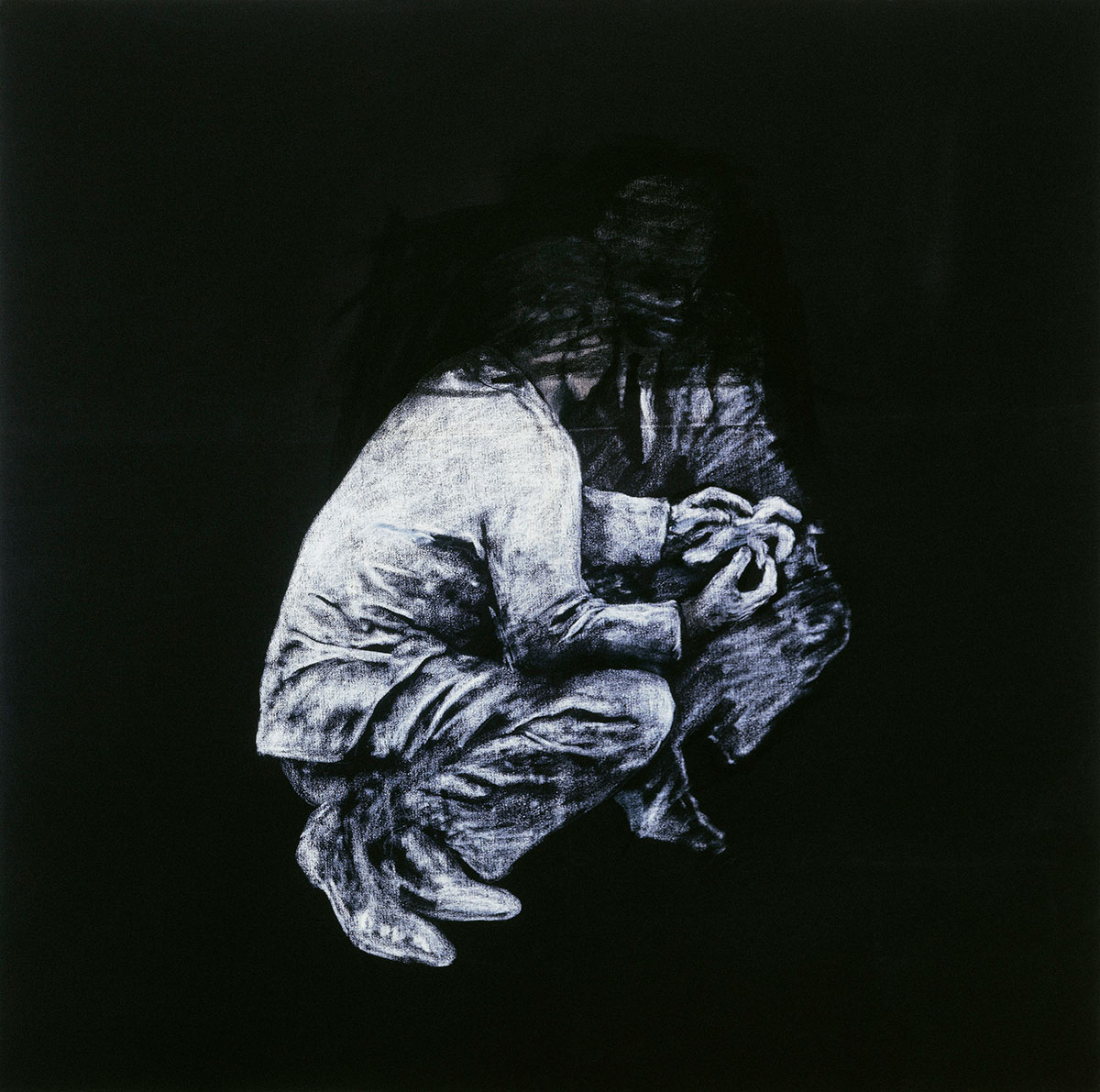PRESENTATION: Juan Muñoz, Drawings 1982–2000
 Juan Muñoz was the most significant of the first generation of artists to achieve maturity in post-Franco Spain, and one of the most complex and individual artists working today. He created moody and challenging installations, most of which featured monochromatic human figures placed amid unnerving architectural spaces and often incorporating animatronics and sound.
Juan Muñoz was the most significant of the first generation of artists to achieve maturity in post-Franco Spain, and one of the most complex and individual artists working today. He created moody and challenging installations, most of which featured monochromatic human figures placed amid unnerving architectural spaces and often incorporating animatronics and sound.
By Dimitris Lempesis
Photo: Centro Botín Archive
The exhibition “Juan Muñoz. Drawings 1982–2000” is the first retrospective of drawings by Juan Muñoz, highlighting his career as a draftsman and examining the changes in his practice over two decades. The exhibition brings together an unprecedented number of Muñoz’s works, to present an overview of his drawings with more than two hundred works specially loaned by institutions, private collections and by the late artist’s Estate. “Drawings 1982–2000” considers the various aspects of the artist’s work as a draftsman and the changes it underwent over approximately two decades of activity, creating a narrative that respects and enhances these considerations. The exhibition is structured as a sequence of 12 sections, organised more or less chronologically, each of which address a different theme of the artist’s work. These sections inlude recreating past exhibitions in which Muñoz incorporated drawings, bringing the artworks back together in the same context for the first time, as well as grouping works from specific time periods of the artist’s career. The exhibition finishes with a poignant section dedicated to the set of drawings titled “A Brief Description Of My Death” (1999), works Muñoz created just two years before his sudden and unexpected death. In the context of European art of the 1980s and 1990s, Juan Muñoz produced an body of drawing work, even if his career was unfortunately brief. The act of drawing was a constant throughout his life, always oscillating between drawing as a thought, a sketch, to more developed or meticulously executed plates, and from freehand drawings to works done after projecting images onto canvas. As a result, his work in this field became extensive. His drawings could form part of sculptural works or be conceived as narrative scenes, but they could also take the form of autonomous creations that allowed him to conceive highly metaphorical images. Muñoz’s daringly free career was marked by his desire to engage in multidisciplinary ideas; from sculpture and drawing, to writing, sound pieces and theatre. In his career as a draftsman, this spirit is found yet again. Even though most of the drawings in Muñoz’s oeuvre are indeed found on paper, he very early on applied the technique on different materials, creating autonomous drawings with sculptural quality. The exhibition sections include: “Balconies” inspired by the slender balcony that nestles against the facades of houses in the narrow lanes of Spanish towns. These are familiar objects silently serving their purpose, like props for a play that is never staged because the characters and protagonists are missing. “Raincoat drawings”, a series of representations of furnished interiors that are drawn in white chalk on large-format cotton fabric dyed black. The white de- piction on a black ground is reminiscent of a photographic negative waiting to be printed as a positive image. “Conversation Pieces” comprised of groups of figures inspired by eighteenth-century group portraits. Their indeterminate androgynous faces look very similar, the figures are wearing jackets or robes, and their trunks open out into a rounded bulge, on which they balance unsteadily. The recreation of his 1995 exhibition in the Isabella Stewart Gardner Museum in Boston, “Portrait of a Turkish Man Drawing”. The show was based on a miniature by Renaissance artist Gentile Bellini in the museum’s collection, which depicted a young man drawing on a tablet, wearing richly adorned oriental clothing and a turban. Muñoz placed a figure modelled on this young man in the exhibition space accompanied by five drawings, each showing a life-sized mouth. Shrouded in darkness, these more-or-less open mouths seem to say somethingor to smile but facial features are lacking. We thus find Muñoz’s 1985 work “Late Portrait” in which he drew on concrete with charcoal; the installation work “The Nature of Visual Illusion”, (1994-97) composed of three figures surrounded by an extensive backdrop of a curtain painted with acrylic on canvas; and the series of drawings “Raincoat Drawings” (1988-95), and “Back Drawings” (1990-95), executed with white chalk and white oil-stick on black fabric, that stand halfway between drawings, paintings, and sculpture. The exhibition ends with “A Brief Description of My Death”, based on a photograph of the American poet Ezra Pound. Muñoz used this portrait on fictive covers for an autobiographical book, as collages in the way a graphic designer might proceed. These drawings would be the last ones Muñoz did before his sudden death two years later.
Photo Left: Juan Muñoz, Portrait of a Turkish Man Drawing, 1995, Oilstick and on paper, 70 x 54 cm, Private collection. Right: Juan Muñoz, An Outpost of Progress, 1992, Mixed media on paper, 112 x 75 cm, Private collection
Info: Curator: Dieter Schwarz, Centro Botín, Muelle de Albareda s/n, Jardines de Pereda, Santander, Spain, Duration: 25/6-16/10/2022, Days & Hours: Tue-Fri 10:00-14:00 & 16:00-20:00, Sat-Sun 10:00-20:00, www.centrobotin.org/
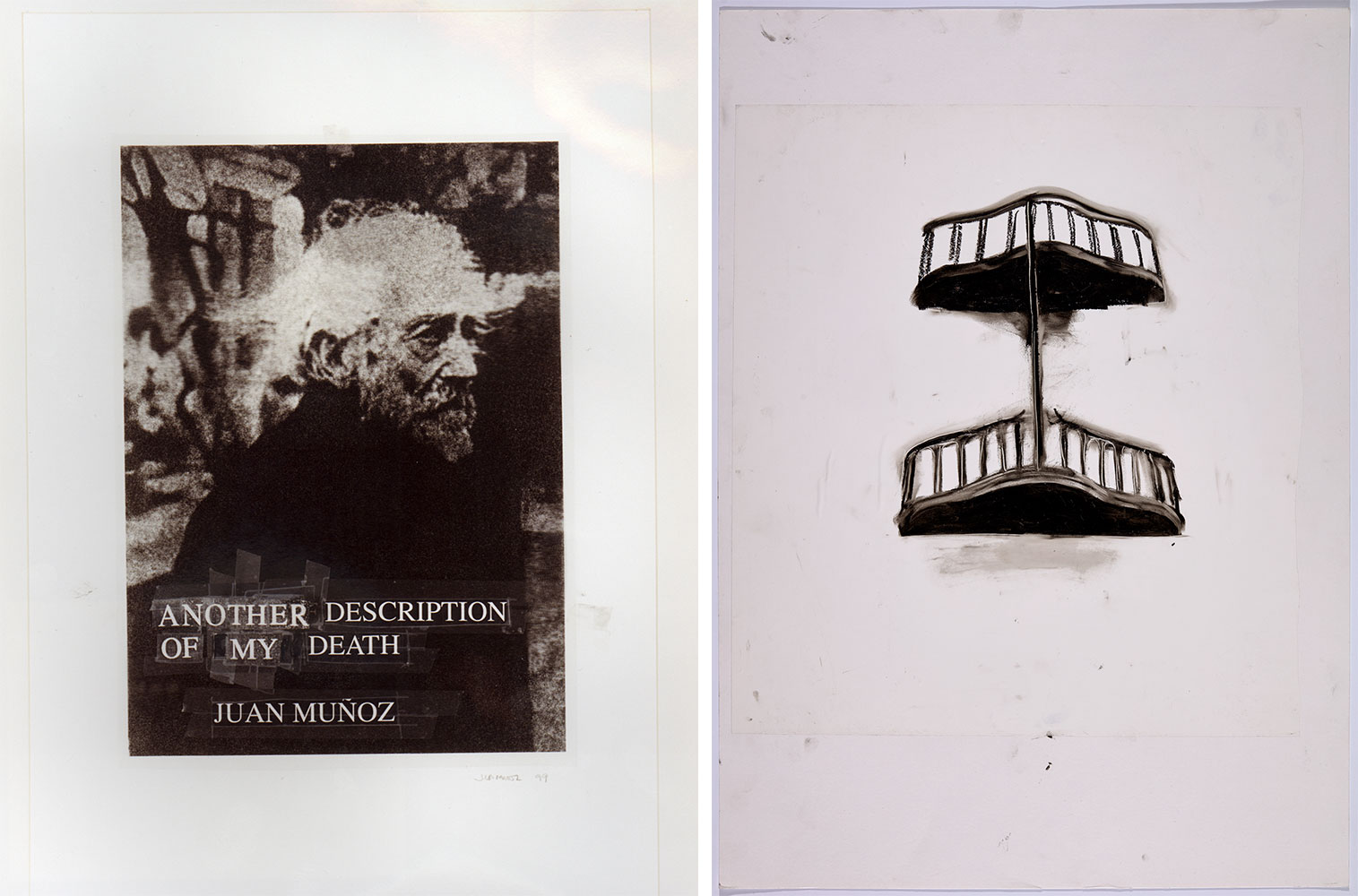
Right: Juan Muñoz, Untitled (Double Balconies), 1984, Oilstick on transparent plastic sheet, on paper, 70 x 50 cm, Private collection
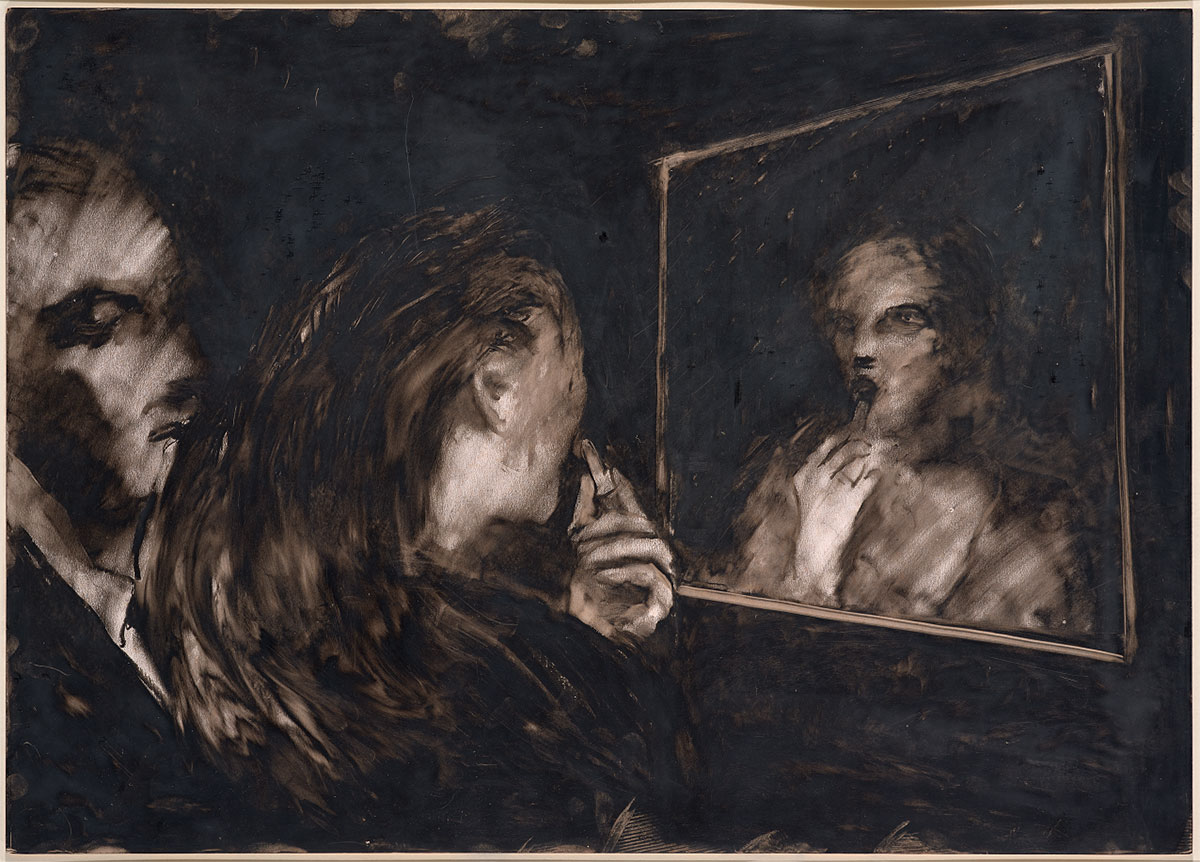
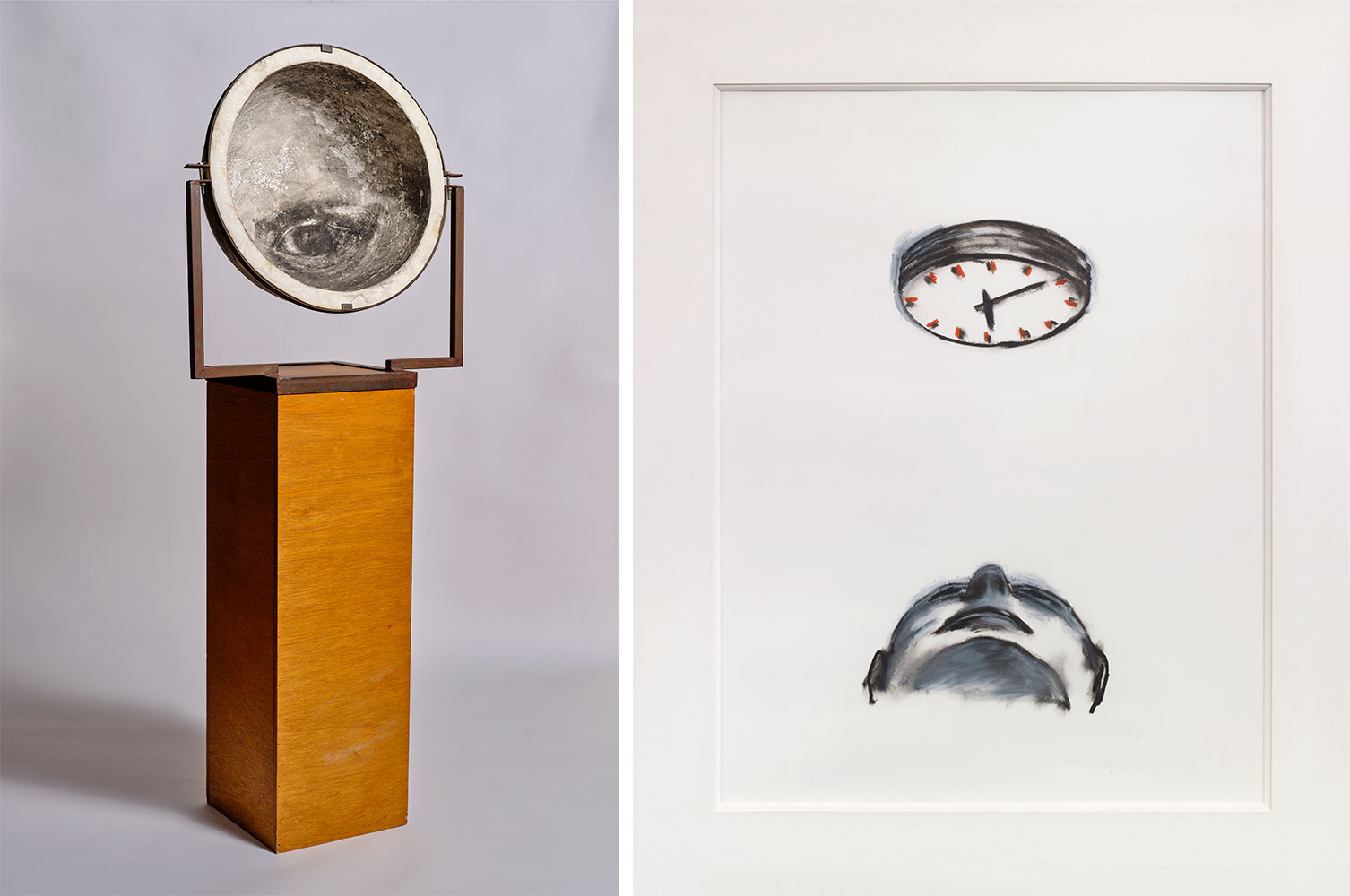
Right: Juan Muñoz, Untitled (Head and Clock), 1988, Oilstick on paper, 43 x 27 cm, Private Collection, Ghent, Belgium
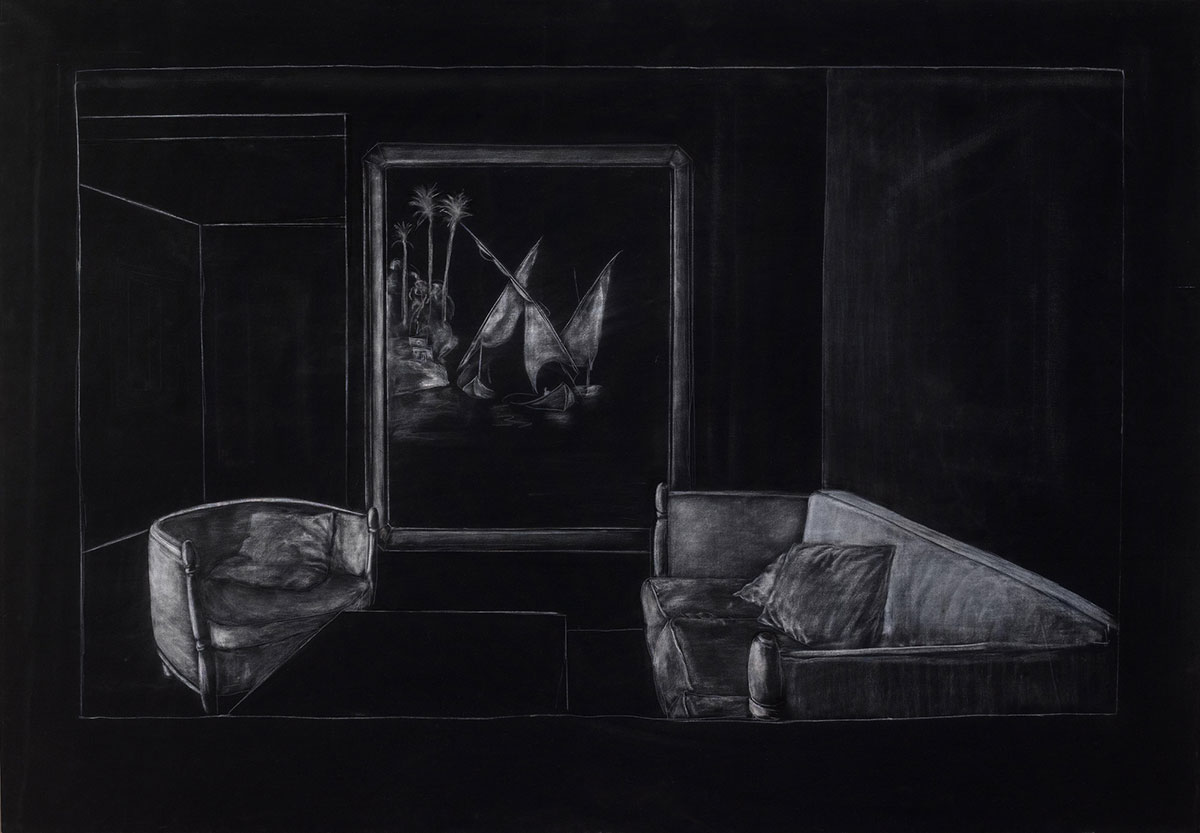
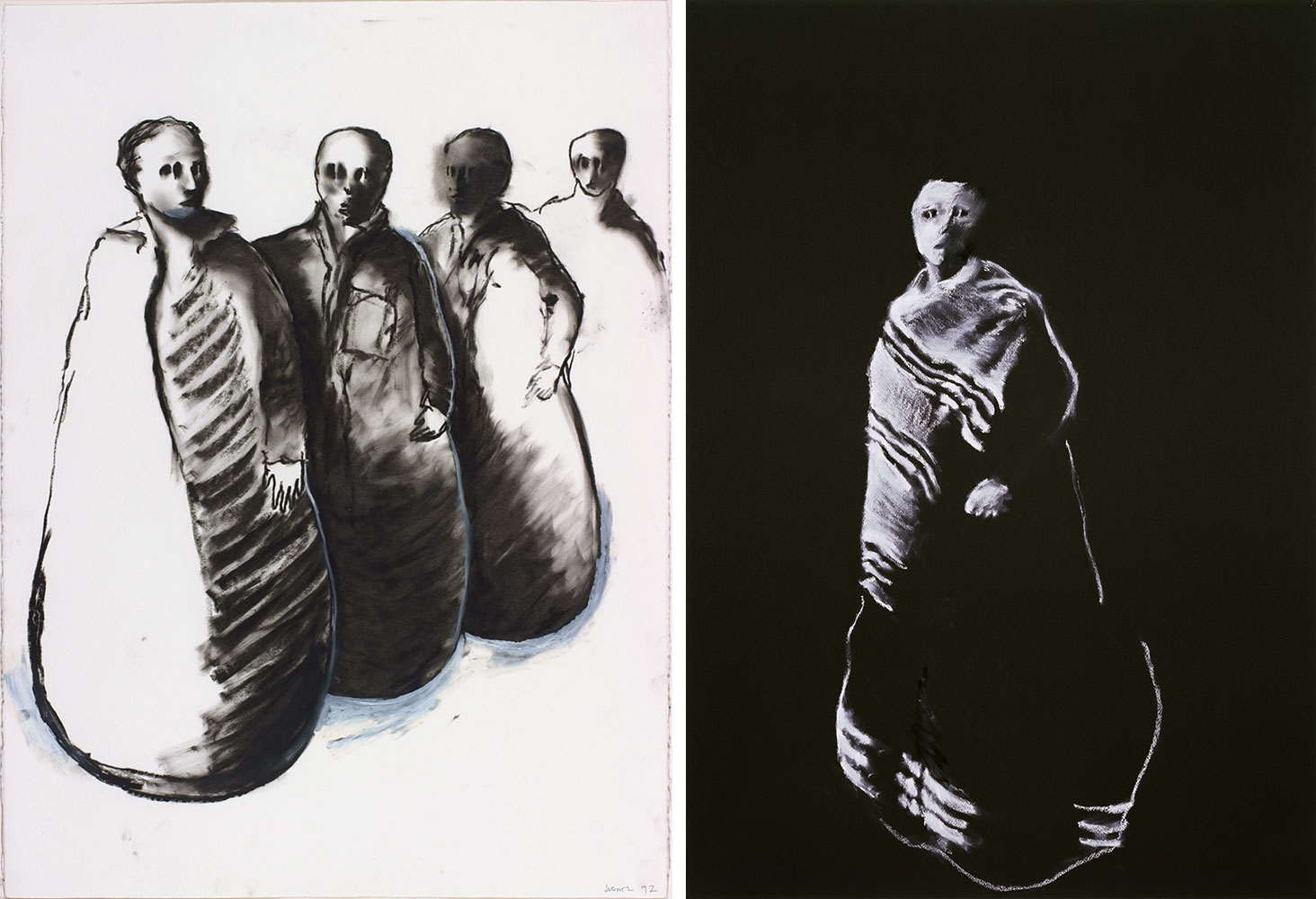
Right: Juan Muñoz, Untitled (Man with Blanket), 1997, Oilstick on black paper, 107,5 x 77,5 cm, Lorena Ruiz de Villa Contemporary Art
